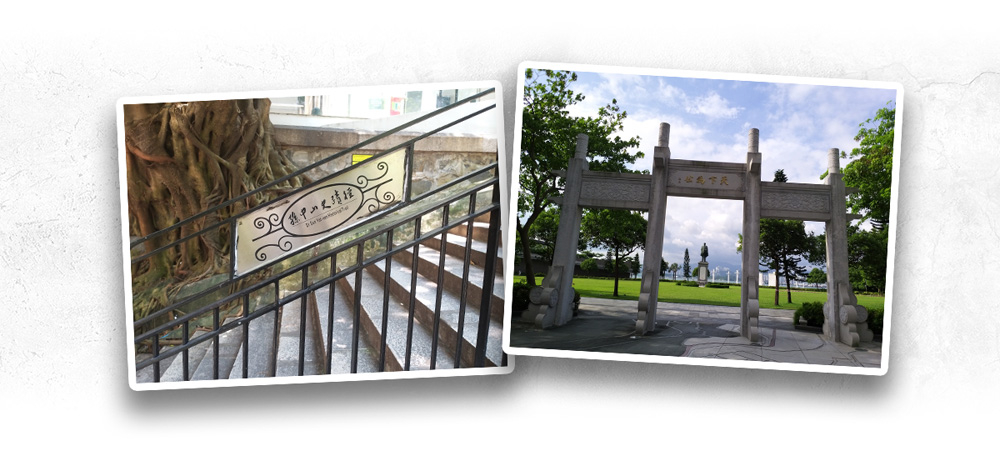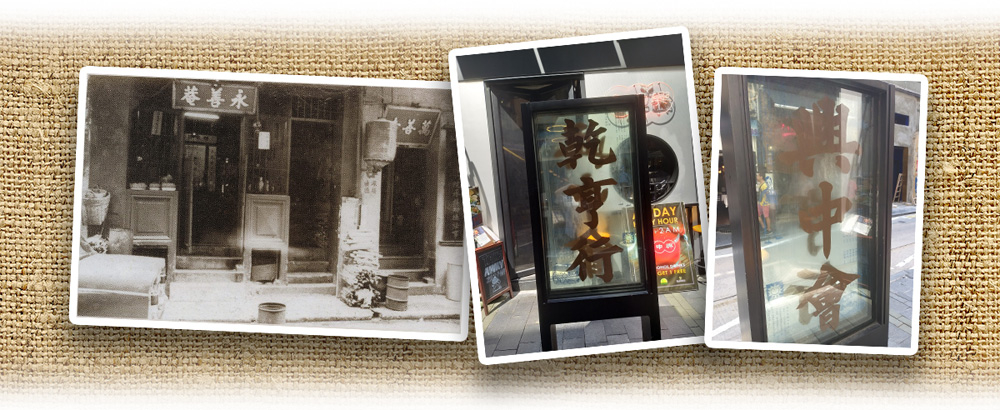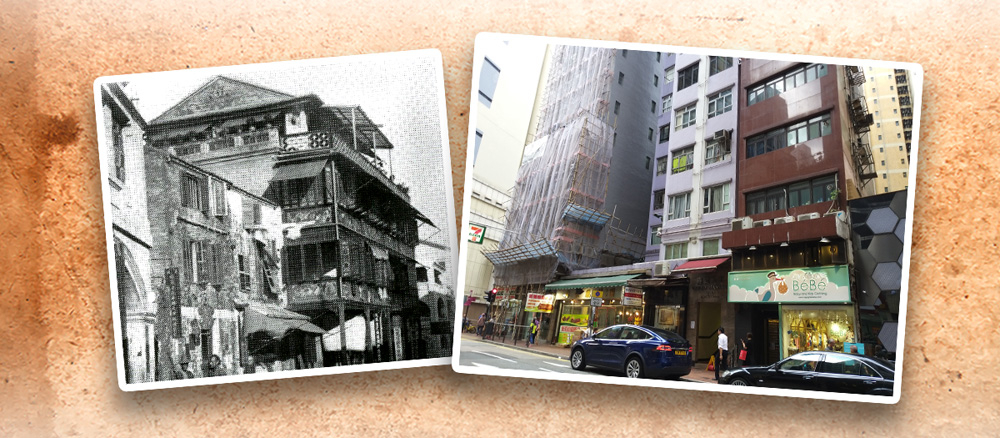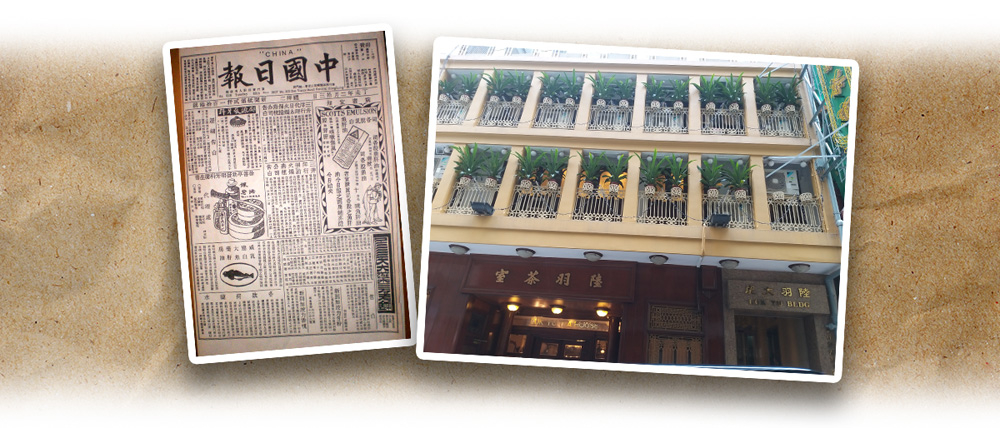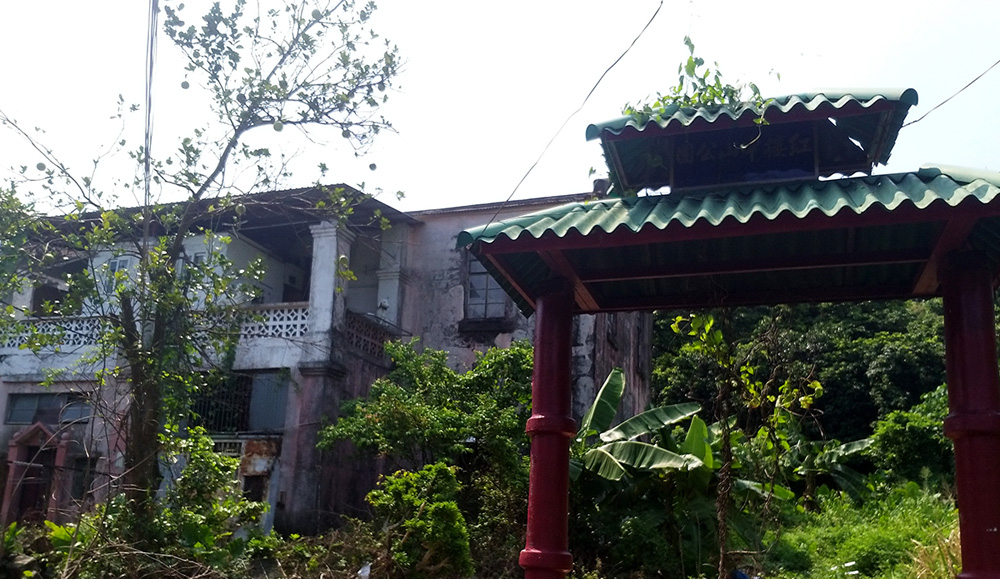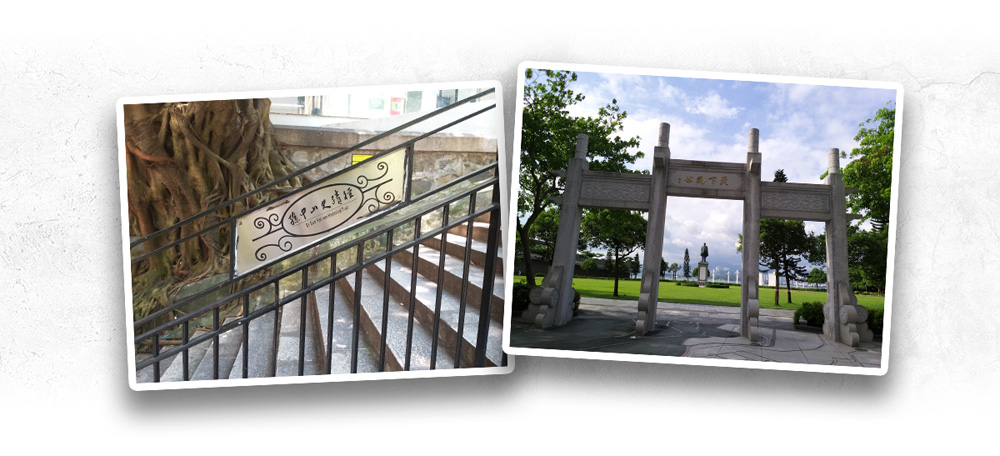Hong Kong played an important role in the anti-Qing revolution. As the city was not under the administration of the Qing government, Sun Yat-sen (孫中山) took advantage of this special political environment and successively founded the Revive China Society headquarters in Hong Kong and the United League Hong Kong branch. For a long time, Hong Kong was the command centre and activity base for the revolution. During the 16 years between the establishment of the Revive China Society headquarters in 1895 and the 1911 Revolution, Sun led ten armed uprisings in the south, six of which were secretly planned in Hong Kong. Although all the armed uprisings planned in Hong Kong failed, the unrelenting spirit of the revolutionaries aroused the public in an immeasurable way. Hong Kong was once the propaganda powerhouse for the revolution and where the first revolutionary newspaper China (《中國日報》) was founded. Revolutionaries raised and transferred funds in Hong Kong. Some Hong Kong businessmen were willing to spend their entire fortune to support the revolution. Some even resulted in a decline in their families. The indigenous inhabitants of the New Territories also actively supported the revolution led by Sun. Ip Ting-sz (葉定仕), who was born in Lin Ma Hang Tsuen (Tsuen as village) in the New Territories, served as the Chairman of the United League Siam (Thailand) branch. He rendered great support to the revolutionary armed struggles financially.
|
|
Why could Hong Kong make a great contribution to the anti-Qing revolution? |
|
|
See answer below. |
The anti-Qing Revive China Society established its headquarters in Hong Kong in 1895. The original site Kuen Hang Club at 13 Staunton Street, Central later became Wing Sin Nunnery. A glass sign is stood there in memory of the Club today.
Hang Fa Lau Restaurant and its original site in Queen’s Road Central today. Sun and his fellows including Yeung Ku-wan (楊衢雲) and Ho Kai (何啓) discussed the Guangzhou Uprising (廣州起義) there in 1895. In October the same year, the Revive China Society launched its first anti-Qing uprising in Guangzhou but failed.
In Pak Tsz Lane Park in Sheung Wan, there are signs in memory of the anti-Qing association Foo Yan Man Ser and the assassination of Yeung Ku-wan. Yeung was involved in organising the Guangzhou and Huizhou (惠州) Uprisings. In January 1901, he was assassinated by the Qing court.
In 1890 (some said 1892), the anti-Qing association Foo Yan Man Ser was established in Hong Kong. Yeung Ku-wan served as the president of the association. On 24 November 1894, Sun Yat-sen founded the Revive China Society in Honolulu, the United States. In February 1895, Foo Yan Man Ser merged with the Revive China Society in Honolulu. The newly merged Revive China Society then set up its headquarters in Hong Kong. Yeung was elected president and Sun was elected secretary.
Chan Siu-bak (陳少白), a member of the Revive China Society, founded China in Hong Kong in 1900. It was the first official newspaper of the revolutionary organ. The right photo shows the original site of the China office at present-day 24 Stanley Street, Central.
Left: the original site of the revolutionary organ Wo Kee Chan at 20 D’Aguilar Street, Central today; Right: the original site of the United League reception centre in Po Hing Fong, Sheung Wan today.
Revolutionaries once planned the 1903 Guangzhou Uprising in Wo Kee Chan. The uprising was coordinated by Tse Tsan-tai (謝纘泰) and funded by the wealthy Hong Kong businessman Li Ki-tong (李紀堂), but it ended in failure. Tse withdrew from the revolution since then and founded the South China Morning Post, in the hope of advocating reform through public opinion. The United League was founded in Tokyo in 1905 and Sun became its prime minister. At the end of the same year, the United League Hong Kong branch was established. It set up reception centres in Caine Road, Po Hing Fong, Morrison Hill Road, Lan Kwai Fong, and Queen’s Road to assist revolutionaries.
In Hong Kong, many people who supported revolutions were wealthy businessmen. They included Li Ki-tong (left), who supported Sun Yat-sen with all his wealth, and Li Yuk-tong (李煜堂, right), who helped the revolutionary newspaper China overcome its financial difficulties.
Ip Ting-sz, an indigenous inhabitant of the New Territories, strongly supported Sun Yat-sen’s revolutionary work. He was the Chairman of the United League Siam (Thailand) branch. Left: Ip Ting-sz with his eldest son’s Ip Luk-shan (葉綠山) family in Thailand in 1936. Right: the former residence of Ip Ting-sz at Lin Ma Hang, New Territories. Completed around 1908, the residence is modelled on Sun’s residence in Cuiheng Village (翠亨村), Zhongshan (中山), Guangdong Province (廣東).
A part of the remains of the Castle Peak Farm nowadays. Between 1901 and 1902, the revolutionary Li Ki-tong bought a few hundred acres of land in Castle Peak, Tuen Mun and ran the Castle Peak Farm. The farm was used by revolutionaries as a place for hiding and training weapons, and a testing ground for bombs.
Tang Yam-nam (鄧蔭南) and the fortified structure at Ha Pak Nai in Yuen Long. Overlooking Deep Bay, the fortified structure at Ha Pak Nai was built around 1910 after the New Army Uprising in Guangzhou. It was built by Tang as refuge for revolutionaries. In 2011, the Hong Kong SAR government declared the fortified structure at Ha Pak Nai a monument. This is the only remaining site of the 1911 Revolution in Hong Kong.
Sun Yat-sen’s revolutionary work was deeply rooted in Hong Kong. Dr Sun Yat-sen Museum, Sun Yat Sen Memorial Park, and a 3.3-km Dr Sun Yat-sen Historical Trail stand in the city in memory of his work. Left: a part of the stairs on Dr Sun Yat-sen Historical Trail; Right: Sun Yat Sen Memorial Park in Sai Ying Pun.
|
|
Why could Hong Kong make a great contribution to the anti-Qing revolution? |
|
|
The major reasons are: (1) Hong Kong was not under the administration of the Qing government. (2) Hong Kong was a melting pot of Chinese and Western cultures. The more advance education system in Hong Kong helped spread new knowledge and ideas. (3) Hong Kong is adjacent to Guangdong, making it convenient to start uprisings in the Chinese mainland, especially in Guangdong. (4) Hong Kong was better connected with the outside world, making it convenient to get support from overseas Chinese. (5) Hong Kong was an important trading port of the Far East. It was handy for the revolutionaries to transfer funds, weapons, and manpower from overseas to start uprisings. |
The images in this material are provided by Professor Lau Chi-pang and Professor Liu Shuyong. Every effort has been made to trace the copyright holders and obtain permission to reproduce this material. Please do get in touch with any enquiries or any information relating to this image or the rights holder.




